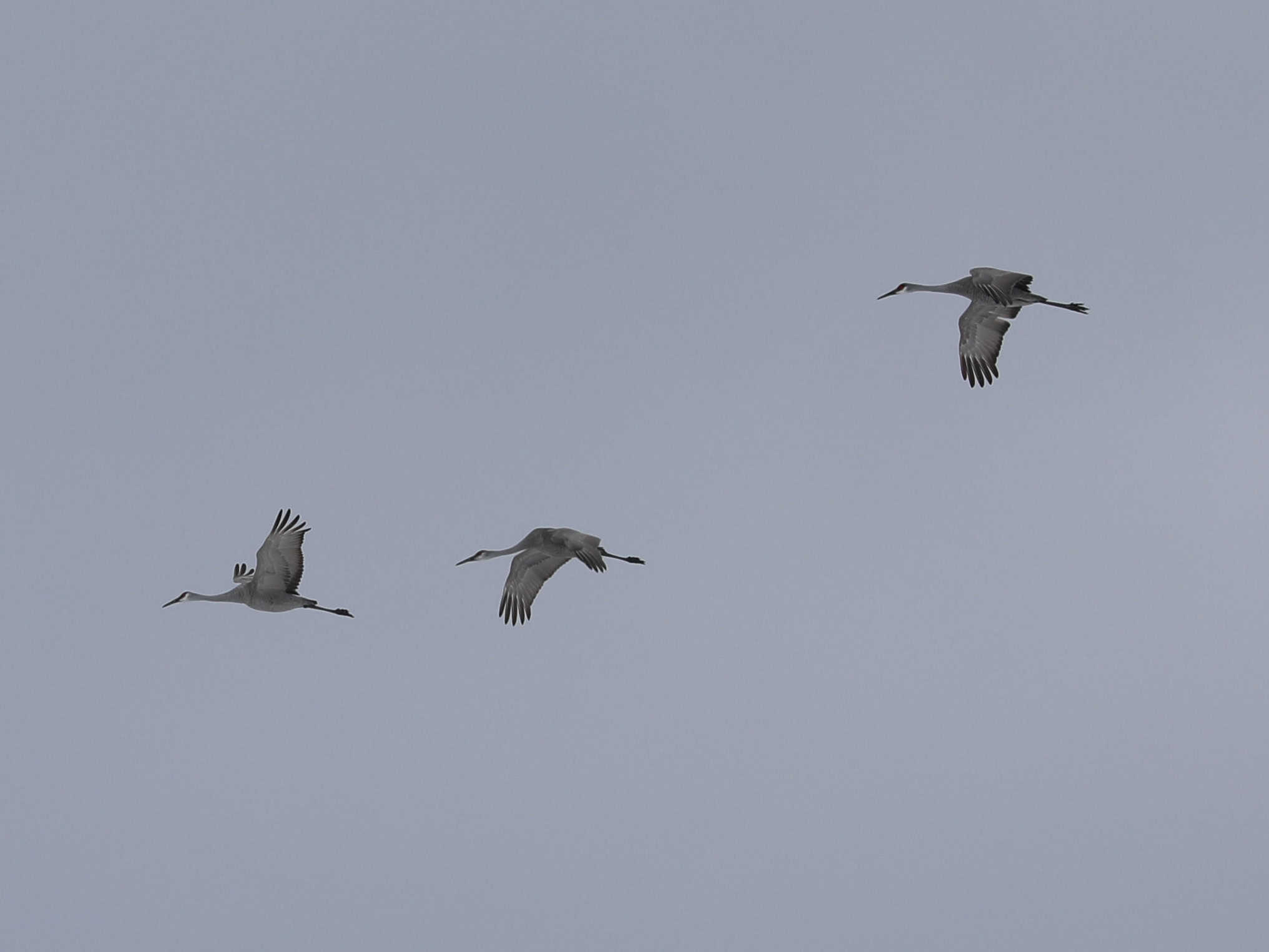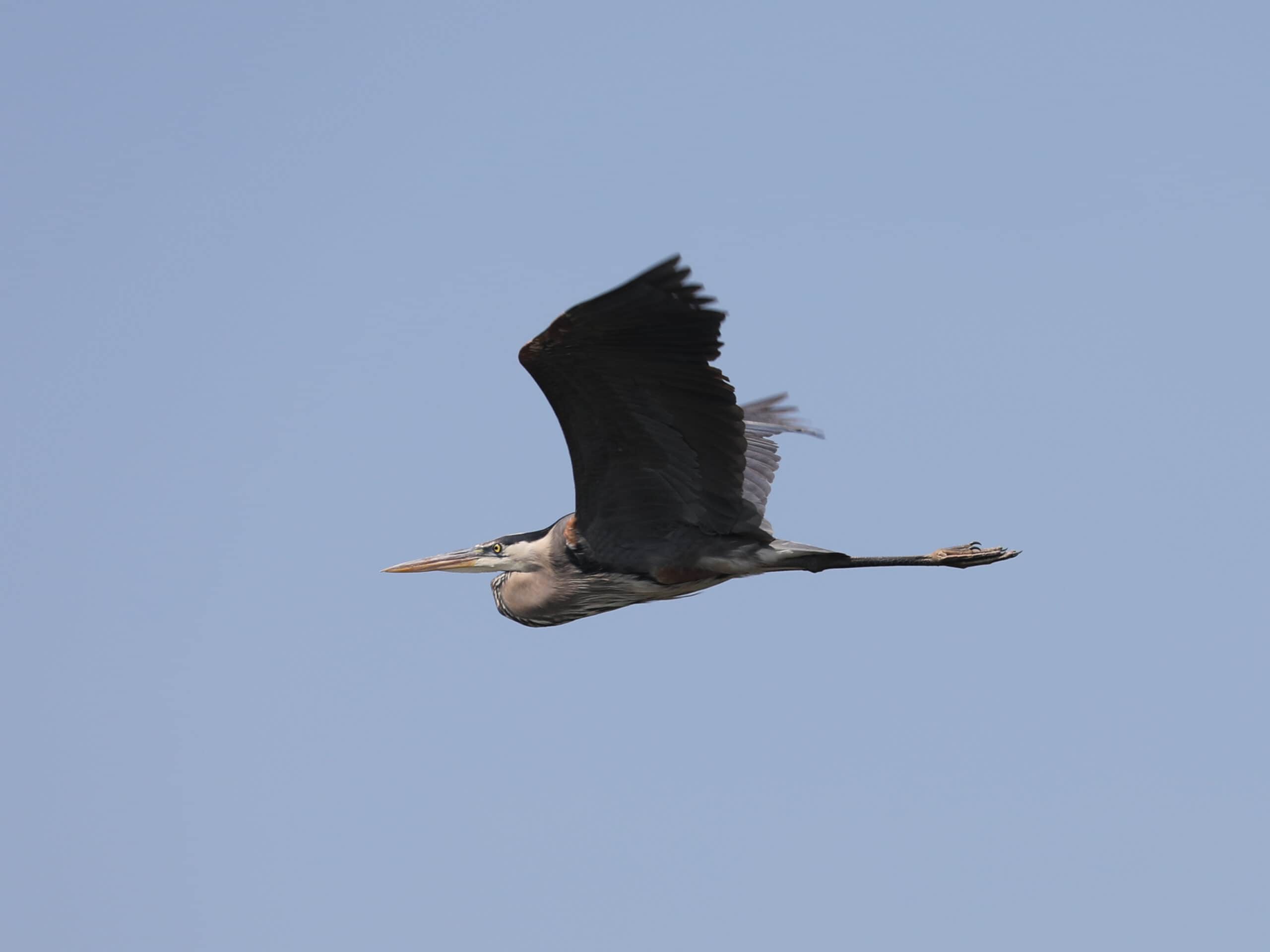Birds of Heaven: Sandhill Cranes
I’ve been enjoying some time this year watching birds in western Pennsylvania near one of the only places in the state where cranes nest. Cranes are rare in the Susquehanna Valley, but they’re common year-round in the extensive swamps and farm fields west of Grove City and Slippery Rock, only about 15 miles from the Ohio border. I photographed these Sandhill Cranes a few months ago as they prepared to land in a farm field to look for food.
Sandhill Cranes are omnivores, meaning that they eat parts of plants as well as animal prey. They spend some time searching wetlands and meadows for insects, small mammals, reptiles or amphibians. They also like crayfish, snails, and the eggs or nestlings of songbirds. They have adapted to find grains in harvested farm fields, especially corn. Natural plant foods include berries and the tubers (thickened parts of the roots) of some plants.
Cranes are sometimes referred to as “birds of heaven” due to their elegant appearance and graceful flight. There are only 15 species of cranes worldwide, with some species occurring on every continent except for South America and Antarctica. North America hosts two crane species, including the Sandhill Crane and the endangered Whooping Crane. In our area, herons like Great Blue Herons and Great Egrets are much more common than cranes. They’re easy to tell apart when they’re flying. Herons fly with their necks folded into an “S” shape (see photo below), while cranes fly with their necks straight.
Birds of Heaven: Sandhill Cranes
I’ve been enjoying some time this year watching birds in western Pennsylvania near one of the only places in the state where cranes nest. Cranes are rare in the Susquehanna Valley, but they’re common year-round in the extensive swamps and farm fields west of Grove City and Slippery Rock, only about 15 miles from the Ohio border. I photographed these Sandhill Cranes a few months ago as they prepared to land in a farm field to look for food.
Sandhill Cranes are omnivores, meaning that they eat parts of plants as well as animal prey. They spend some time searching wetlands and meadows for insects, small mammals, reptiles or amphibians. They also like crayfish, snails, and the eggs or nestlings of songbirds. They have adapted to find grains in harvested farm fields, especially corn. Natural plant foods include berries and the tubers (thickened parts of the roots) of some plants.
Cranes are sometimes referred to as “birds of heaven” due to their elegant appearance and graceful flight. There are only 15 species of cranes worldwide, with some species occurring on every continent except for South America and Antarctica. North America hosts two crane species, including the Sandhill Crane and the endangered Whooping Crane. In our area, herons like Great Blue Herons and Great Egrets are much more common than cranes. They’re easy to tell apart when they’re flying. Herons fly with their necks folded into an “S” shape (see photo below), while cranes fly with their necks straight.
About The Author
Dan Hinnebusch is the Ornithologist for Wild Birds Unlimited. Click to learn more.





